Samhain: The Celtic Festival of Harvest, Hearth, and Feast
As Hallowe’en approaches, we asked Lorraine O’Dwyer from Gallivanting.ie, expert forager and storyteller and Taste Wexford’s tour guide, to share the history and folklore around Samhain.
Lorraine in Courtown Woods
As the days grow shorter and the chill of winter settles in, Samhain—a festival deeply rooted in Irish tradition—ushers in the end of the harvest season and the beginning of the darker half of the year. More than just a spiritual celebration, Samhain in Ireland has long been associated with feasting and the earth's bounty. While many recognise Samhain as the origin of modern Hallowe’en, its significance in Irish culture runs much more profound, particularly regarding the food that graced tables during this sacred time.
Let’s explore the rich history of Samhain from the Irish perspective, focusing on the festive foods and traditions that continue to inspire those who honour this ancient festival.
The Celtic Roots of Samhain: A Harvest Celebration
In ancient Ireland, Samhain marked the final harvest before winter set in. It was a time of celebration and preparation as communities gathered to give thanks for the fruits of the earth while preparing for the long, cold months ahead. The Celts viewed this time as the most liminal point in the year - when the veil between the worlds of the living and the dead was at its thinnest.
While spiritual practices and rituals were central to the celebration, Samhain was also an occasion for feasting on the season’s last abundance. Families and communities would come together to share the fruits of their labour, offering food to the living and the spirits of their ancestors, who were believed to walk the earth on this night.
Samhain Supper
Traditional Samhain Foods: Honouring the Harvest
At the heart of Samhain is the tradition of preparing and sharing food that reflects the harvest. In Ireland, traditional foods for Samhain were simple but hearty, often revolving around seasonal ingredients like root vegetables, grains, and apples. These foods were practical and symbolic, representing nourishment, warmth, and connection to the earth’s cycles.
Let’s take a look at some of the essential foods that have been associated with Samhain in Irish tradition:
Barmbrack (Báirín Breac): One of the most iconic foods associated with Samhain is barmbrack, a fruit-filled yeast bread. What makes this sweet treat particularly special is its role in divination. Small tokens, such as a ring, coin, or cloth, were traditionally baked into the loaf, each representing a different fortune for the coming year. Finding the ring, for example, symbolised an impending marriage, while the cloth hinted at financial troubles. Today, many families across Ireland continue to enjoy barmbrack during the Hallowe’en season, keeping this delightful custom alive.
Colcannon: Another classic dish enjoyed during Samhain is colcannon, a warm and comforting blend of mashed potatoes, kale (or cabbage), and butter. This dish was often served with coins hidden inside, offering a playful element to the meal. Colcannon is deeply rooted in Irish agricultural life, showcasing the importance of potatoes as a staple food during the colder months. This dish, still popular today, evokes the simple yet nourishing meals that sustain families throughout winter.
Apple-Based Dishes: Apples held a special place in Irish folklore and were a key symbol of Samhain. Not only were apples plentiful in autumn, but they were also used in traditional Samhain games and rituals, such as bobbing for apples - a practice still enjoyed by children today. Apple tarts, pies, and even ciders made their way onto the Samhain feast table, serving as both a seasonal treat and a nod to ancient traditions of divination and connection to the otherworld.
Nuts and Seeds: Hazelnuts, in particular, were seen as a symbol of wisdom and were commonly gathered and eaten during Samhain. In Celtic mythology, hazelnuts were linked to knowledge and the ability to foresee the future, making them fitting food for a festival centred around the mystical and unknown. The hearth fire often enjoyed roasted nuts, which remain a favourite autumn snack.
Picking apples
The Communal Hearth: Where Tradition Meets Food
Samhain was a time for individual families to feast and for communities to gather around the communal hearth, offering hospitality to neighbours and travellers alike. In many Irish homes, an extra place would be set at the table for wandering spirits or ancestors returning to visit. Food was not only nourishment for the living but an offering to those who had passed on.
One charming Irish Samhain tradition was to leave a portion of the meal outside the door as an offering to the spirits or the Fairies, Who were believed to bless or curse the crops depending on how they were treated. By leaving food offerings, people hoped to ensure a good harvest or ward off any mischief the following year.
Feasting and Foresight: Food as a Window to the Future
Divination was a central theme during Samhain, and food played an important role in predicting the future. Whether it was the ring in the barmbrack or the coins hidden in the colcannon, these playful food traditions kept the spirit of mystery and magic alive during the feast. Other games involved peeling apples in long strips and tossing the peels over the shoulder to reveal the initial of a future spouse, further linking the harvest to the unseen forces at play during Samha, The Enduring Spirit of Samhain Feasts in Modern Ireland.
While the way we celebrate Samhain has evolved over the centuries, many Irish households still honour the ancient traditions of feasting, gathering, and reflecting. Whether it’s baking a loaf of barmbrack, mashing up a pot of colcannon, or enjoying the simple pleasure of warm, spiced apple dishes, the foods of Samhain remain a delicious and meaningful way to connect with the past.
Samhain’s focus on food reminds us that even as we move into the dark of winter, there is abundance to be shared and gratitude to be expressed. The season’s fruits nourish our bodies and remind us of our connection to the earth, to each other, and to those who came before us.
So, as Samhain approaches, why not embrace some of these traditional Irish dishes and celebrate the turning of the seasons in true Celtic style? Whether you’re setting a place for ancestors at your table or simply enjoying the warmth of a well-prepared meal with loved ones, the essence of Samhain continues to live on in our kitchens and hearths.
Sláinte!
Lorraine x




